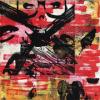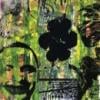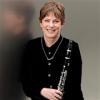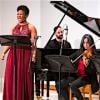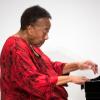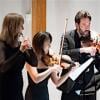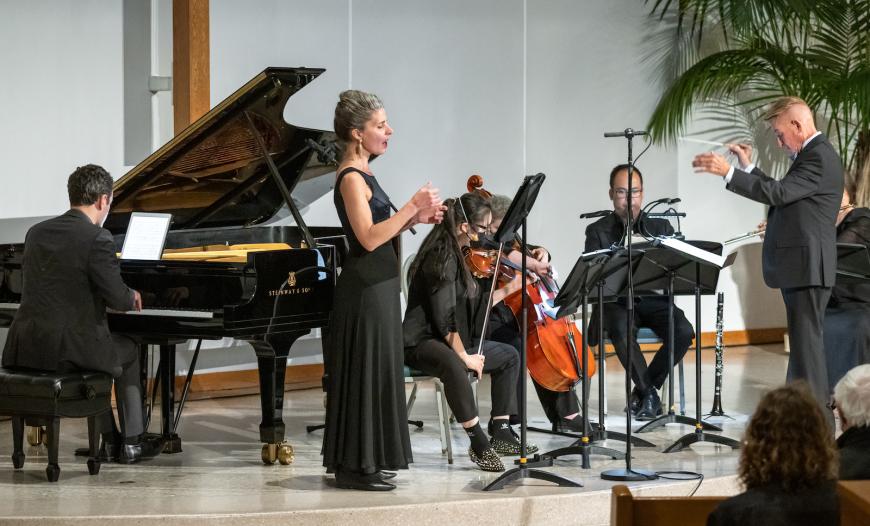
The first thing that generally comes to mind when Italian music is mentioned is, of course, opera. Then, if it’s instrumental music you’re after, Vivaldi — or if you want to cheat, perhaps a few Russian composers on holiday. Then in the 20th century, it’s Ottorino Respighi, or well-known film composers like Nino Rota or Ennio Morricone.
What doesn’t come up very often is the strand of Italian musical thinking heavily affected by musical and political developments in Europe, emerging as neoclassicism and rival atonal techniques in the 20th century. Jacaranda Music Artistic and Executive Director Patrick Scott connected some of the dots in his always-absorbing program notes for another of the organization’s habitually enterprising programs Saturday night in Santa Monica’s First Presbyterian Church, “Italian Modern.”
That Jacaranda would do so on a day (May 21) when Southern California opera companies were simultaneously unveiling Italian-language productions (LA Opera’s Aida, Long Beach Opera’s Giustino) is a bizarre coincidence. Fortunately, the opera productions had multiple performances, whereas the Jacaranda concert was a one-off — and thus, the priority destination for seekers of musical adventure.
The concert focused most of its attention on two important iconoclastic composers of the 20th century, Ferruccio Busoni (1866-1924), and Luciano Berio (1925-2003), both of whom made their biggest impressions as cosmopolitans yet without losing sight of their native roots. Add to that duo Luigi Dallapiccola (1904-1975) and one of the Russian travelers, Igor Stravinsky, as bookends to the program. All of them were inveterate transcribers and transformers of music of the past, as well as trailblazers into the future.
Busoni first came into focus with a selection from Seven Elegies for piano, “All’ Italia! (In Modo napolitano),” a small work with a big sound and an Italian folk feeling in its center. Pianist and Busoni aficionado Steven Vanhauwaert gave the rolling chromatic scales the monster sonority they deserve. He then teamed with clarinetist Jonathan Sacdalan in Élégie, a late piece with a rather quirky brand of lyricism that moves in odd directions and doesn’t sound like anyone else’s music.
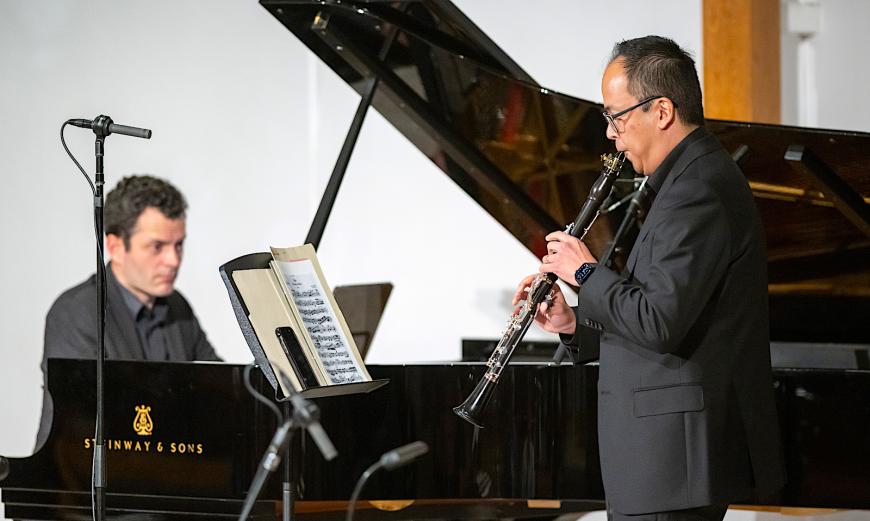
An extraordinary Erwin Stein transcription of Busoni’s Berceuse élégiaque for a nonet led by Mark Alan Hilt probed deeper into the Busoni mystique, the strings producing a warm, dark-blue sonority, the harmonium adding a mysterious touch of its own, all in a kind of stylistic limbo between centuries. Hearing rare Busoni in miniature only whets the appetite for much more in June 2023 when Igor Levit and Esa-Pekka Salonen team up to perform the composer’s gigantic Piano Concerto in San Francisco for the first time.
Berio’s contribution began with O King, a brief elegy for the murdered Martin Luther King Jr. (later transferred into Berio’s great Sinfonia) that manages to be both detached and ultimately moving as the wordless syllables gradually coalesce into the name “King.” Mezzo-soprano Kristen Toedtman was the only voice, rising to an impressively swelling quality above the Jacaranda Chamber Ensemble. With O King squeezed in between the Busoni pieces in the concert’s first half, that made four elegies in a row, yet the contrasts between them were large enough to banish any hint of monotony.
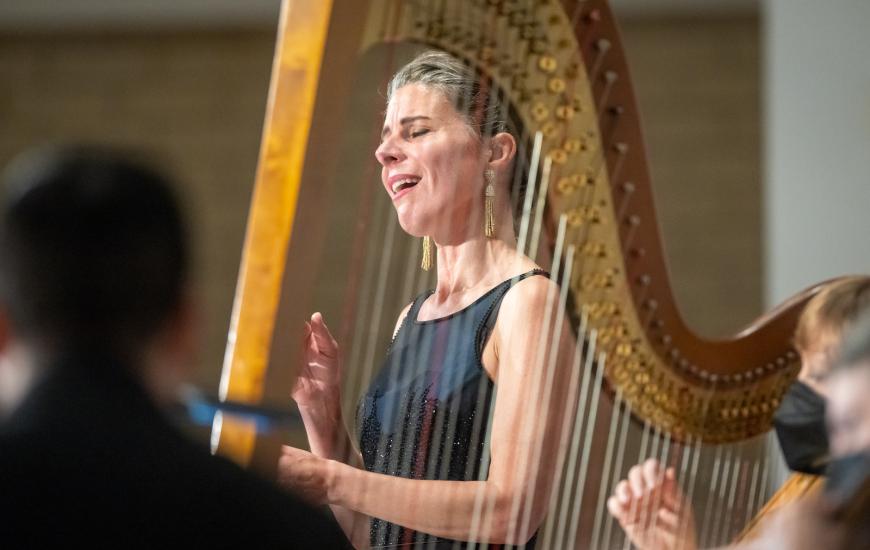
The wide-ranging survey of Berio miniatures continued through the second half, though not doing anything particularly radical-sounding from his catalogue. In Chamber Music, which consists of three settings of poems by James Joyce — “Strings in the Earth and Air,” “Monotone,” and “Winds of May, that dance on the sea” — Toedtman’s voice seemed to glow in the church’s acoustics, with a narrative portion of the third poem giving way to sensuous song.
With that in mind, it was a clever brainstorm to follow up with Berio’s series of short piano pieces based on the above four elements, Wasserklavier, Erdenklavier, Luftklavier, and Feuerklavier, which contain gentle ripples, grounded bursts of sound, airborne clusters, and a fire that burned and flickered in trills respectively. The Berio portion ended with the pinpoints of color in Sequenza II for harp, played by Alison Bjorkedal,
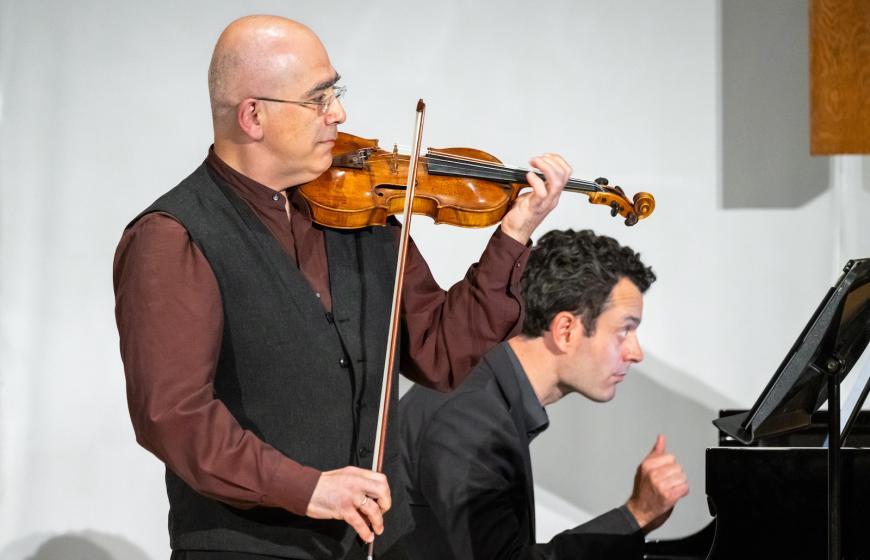
On to the bookends, neoclassical compositions both, with violinist Movses Pogossian and Vanhauwaert in charge. Dallapiccola’s Tartiniana Seconda from 1955–56, a suite of four short movements inspired by Tartini, has a rather archaic sound, emphasized by Pogossian applying period-performance swells with little or no vibrato.
Stravinsky’s delightful Suite Italienne for violin and piano is really a cut-down version of the Pulcinella Suite with addenda from the ballet not covered in the suite, delivered in a rugged, spirited performance by Pogossian with Vanhauwaert keeping things on track. OK, so Stravinsky wasn’t Italian, but this was based upon music by Italians and one Dutchman — and in any case, Stravinsky chose to be buried in Italian soil, an island cemetery across the water from Venice. It was simultaneously the beginning of Stravinsky’s long neoclassical period and the joyful ending of the concert. Really great programming.



